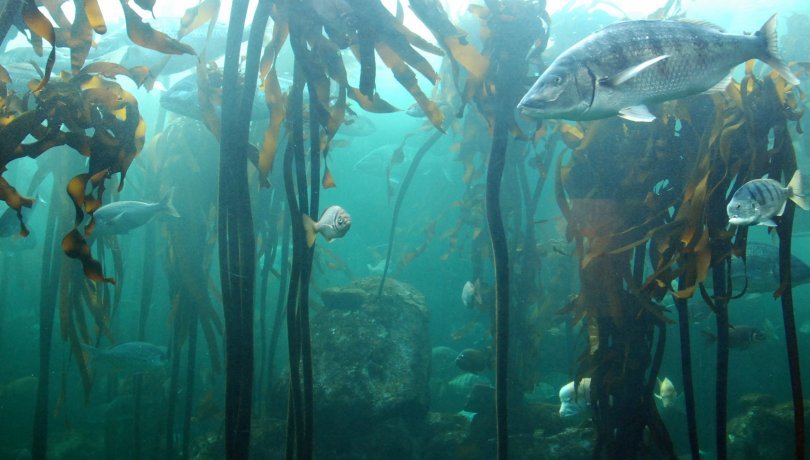Tropical oceans teem with the dazzle and flash of colorful reef fishes and contain far more species than the cold ocean waters found at high latitudes. This well-known “latitudinal diversity gradient” is one of the most famous patterns in biology, and scientists have puzzled over its causes for more than 200 years.

Tropical oceans teem with the dazzle and flash of colorful reef fishes and contain far more species than the cold ocean waters found at high latitudes. This well-known “latitudinal diversity gradient” is one of the most famous patterns in biology, and scientists have puzzled over its causes for more than 200 years.
A common explanation for the gradient is that warm reef environments serve as evolutionary hot spots for species formation. But a new study that analyzed the evolutionary relationships between more than 30,000 fish species concludes that the fastest rates of species formation have occurred at the highest latitudes and in the coldest ocean waters.
As concludes the new study, published today in Nature, in the past million years, cool-water and polar ocean fishes formed new species twice as fast as the average species of tropical fish. This study has been leaded by the University of Michigan and counts with te collaboration of other international institutiones, including the Institute of Marine Science (ICM-CSIC).
“These findings are both surprising and paradoxical, because we find that speciation is actually fastest in the geographic regions with the lowest species richness", says Daniel Rabosky, evolutionary biologist from the University of Michigan and lead author of the study.
“Until now, the generalized idea was that species formation rates are higher in the tropics. In this study we tested this hypothesis, by examining the relationship between latitude, species richness and the new species formation rate among marine fish, and we have seen that the trend is the opposite: the generation of new species is faster in high latitudes", clarifies Marta Coll, co-author of the work and researcher at the Institute of Marine Sciences of the CSIC.
The authors admit they cannot fully explain their results, which are incompatible with the idea that the tropics serve as an evolutionary cradle for marine fish diversity. The findings also raise questions about whether the rapid cold-ocean speciation the team documented reflects a recent and ongoing expansion of marine diversity in these areas.
The mystery of the extinction of species
Common sense suggests that a high rate of new species formation will eventually lead to impressive levels of biodiversity. But that depends on how many of the newly formed species survive and how many go extinct. And extinction rates could not be addressed through the methods used in the current study.
“The number of species you find in a region is largely a balance between the rate at which new species form and the rate at which extinction eliminates them”, Rabosky said. The rapid speciation of fishes in cold, high-latitude oceans documented in this study will only cause diversity to increase if it is generally higher than extinction.
Data from fossil records and museum specimens
The team gathered an evolutionary tree of 31,526 species of ray-finned fish, and then focused their analysis on marine species from around the world. An evolutionary tree, or phylogenetic, is a diagram that shows the evolutionary relationships between several species. The one elaborated in this project is one of the biggest that has been done to date.
To do this, the scientists analyzed data from fossil records and museum specimens published in scientific journals and in the available databases. They used very complex mathematical and statistical models to estimate the rates at which different groups of fish are divided into new species. “The computational challenges for analyzing these types of data are pretty extreme”, said study co-author Michael Alfaro, an evolutionary biologist at the University of California. "The analyses in the study required the equivalent of thousands of desktop computers running continuously for many months", he added.
The work is the result of the collaboration of researchers from the universities of Michigan, Yale, Pennsylvania, Freiburg and James Cook University, along with experts from GEOMAR (Helmholtz Center for Ocean Research) and the CSIC Institute of Marine Sciences, with Marta Coll, researcher at the Department of Marine Renewable Resources, as co-author of the article.
__
Article: An inverse latitudinal gradient in speciation rate for marine fishes. Daniel L. Rabosky, Jonathan Chang, Pascal O. Title, Peter F. Cowman, Lauren Sallan, Matt Friedman, Kristin Kaschner, Cristina Garilao, Thomas J. Near, Marta Coll & Michael E. Alfaro. Nature, 2018. https://doi.org/10.1038/s41586-018-0273-1
__
Text adapted from University of Michigan (link)